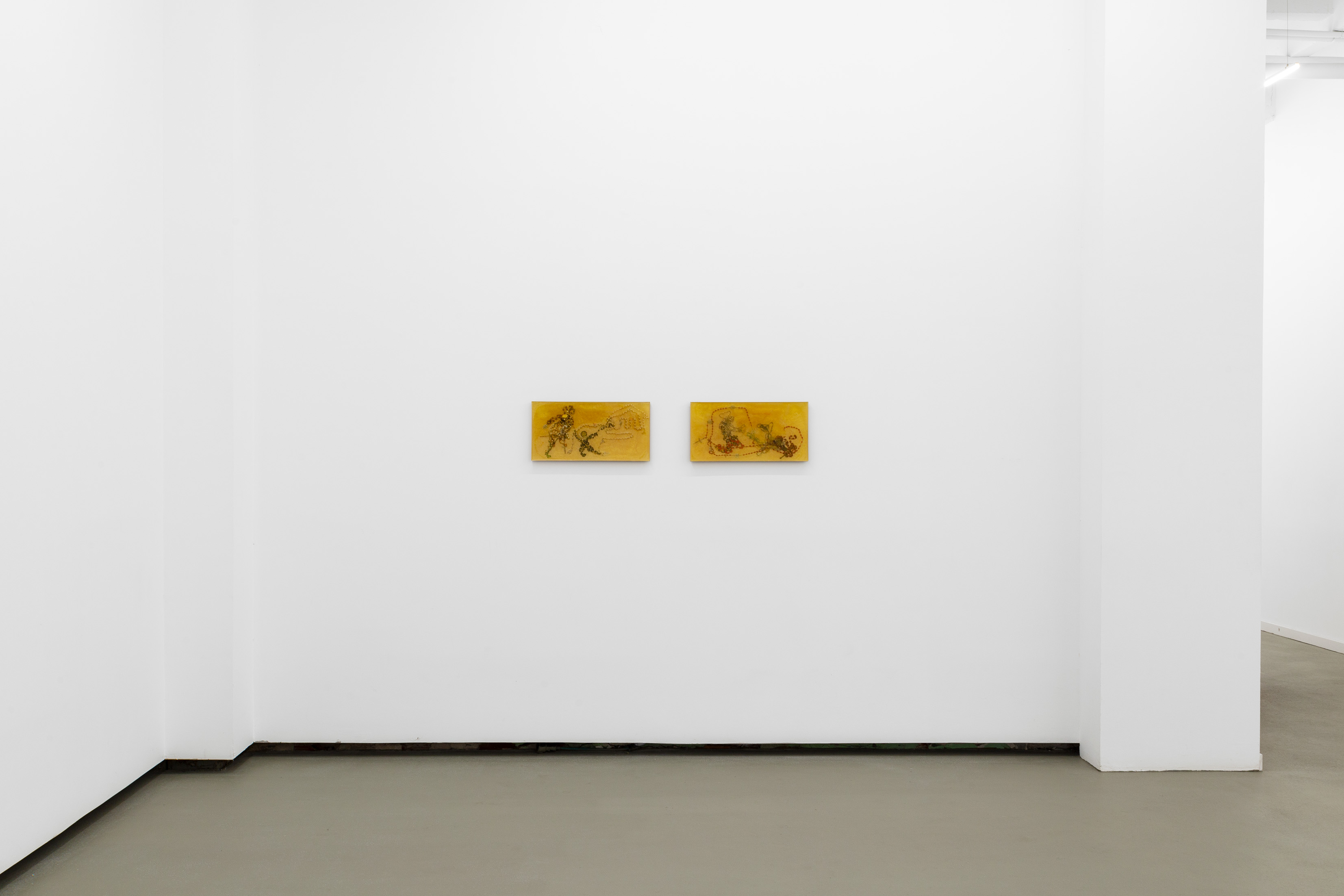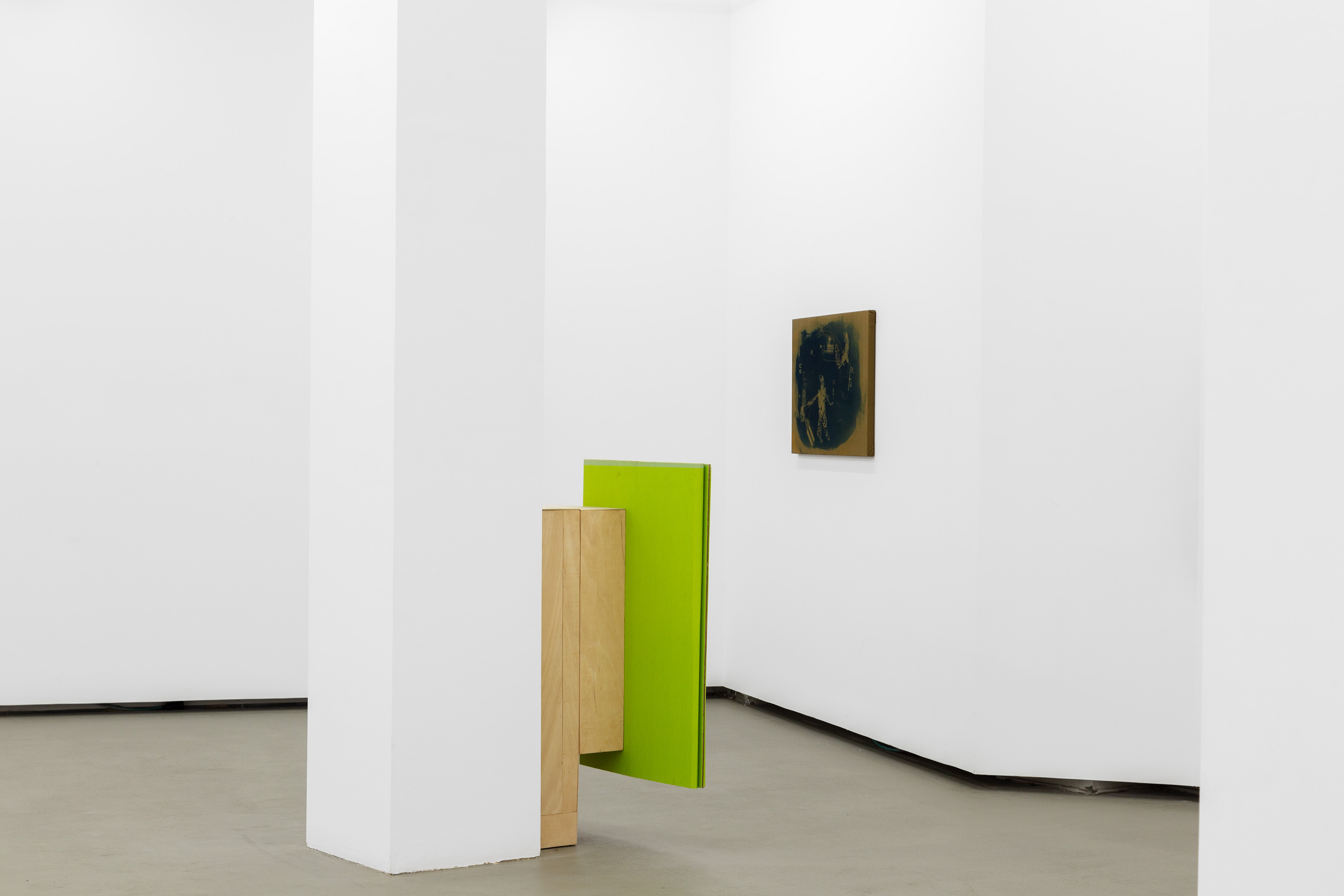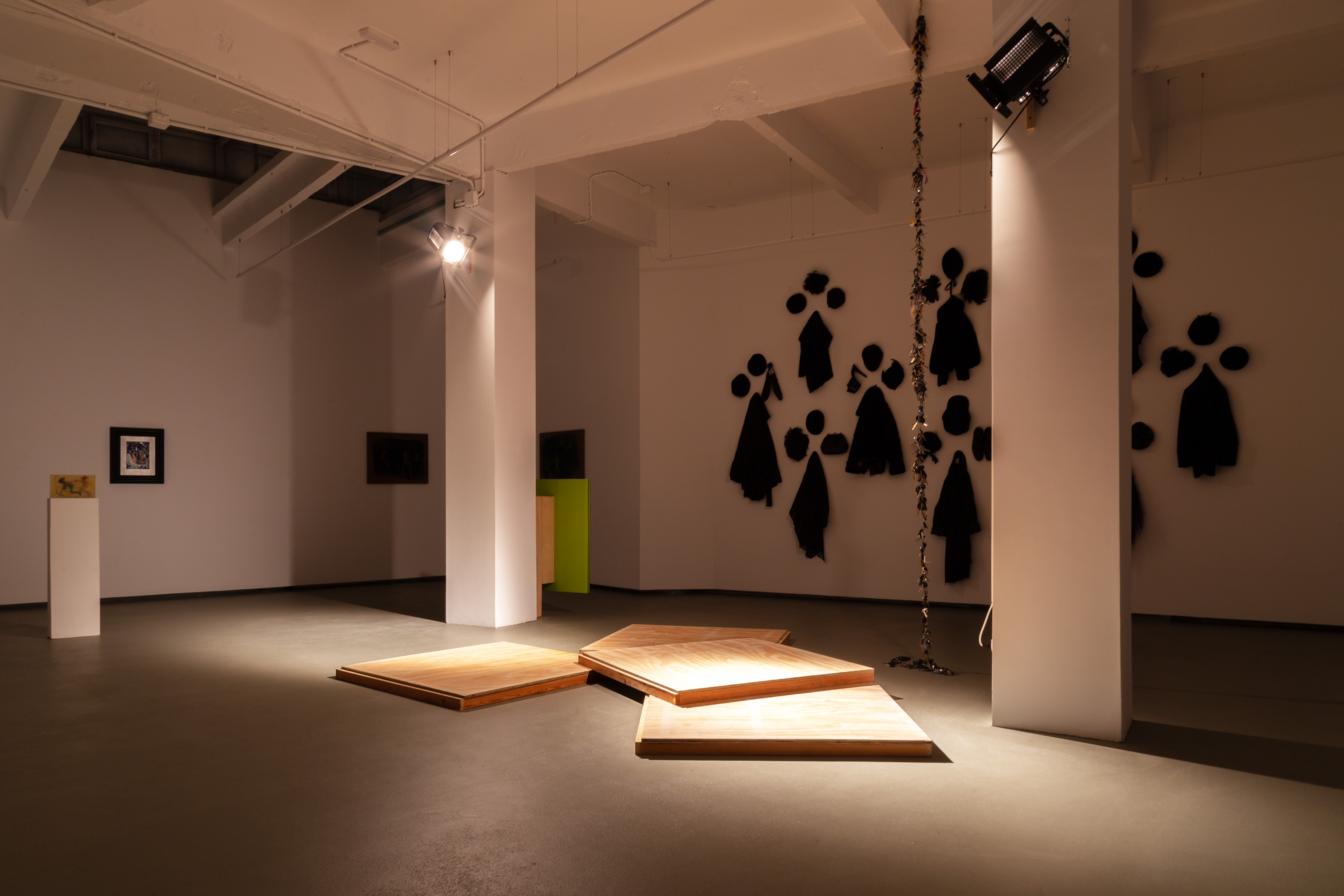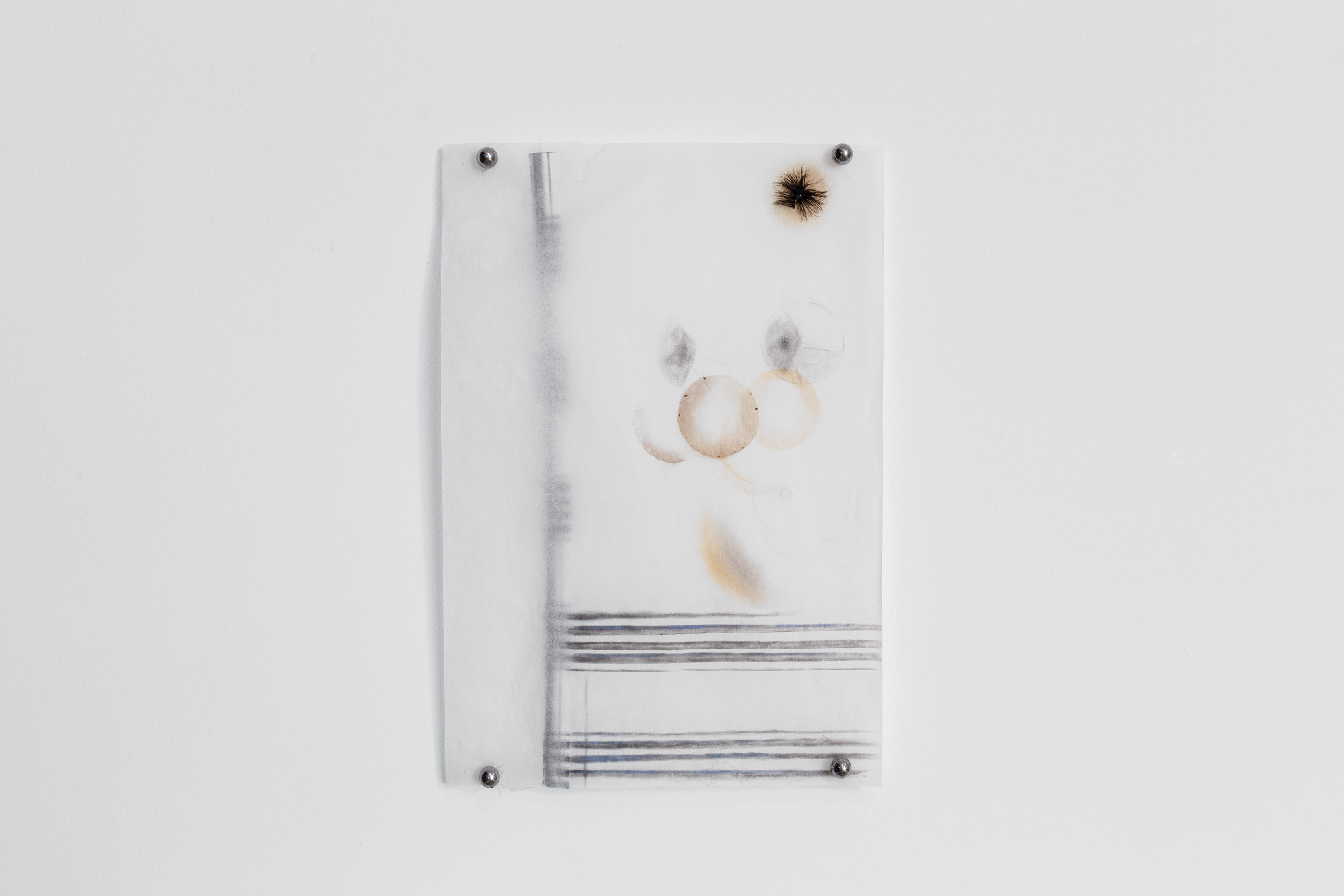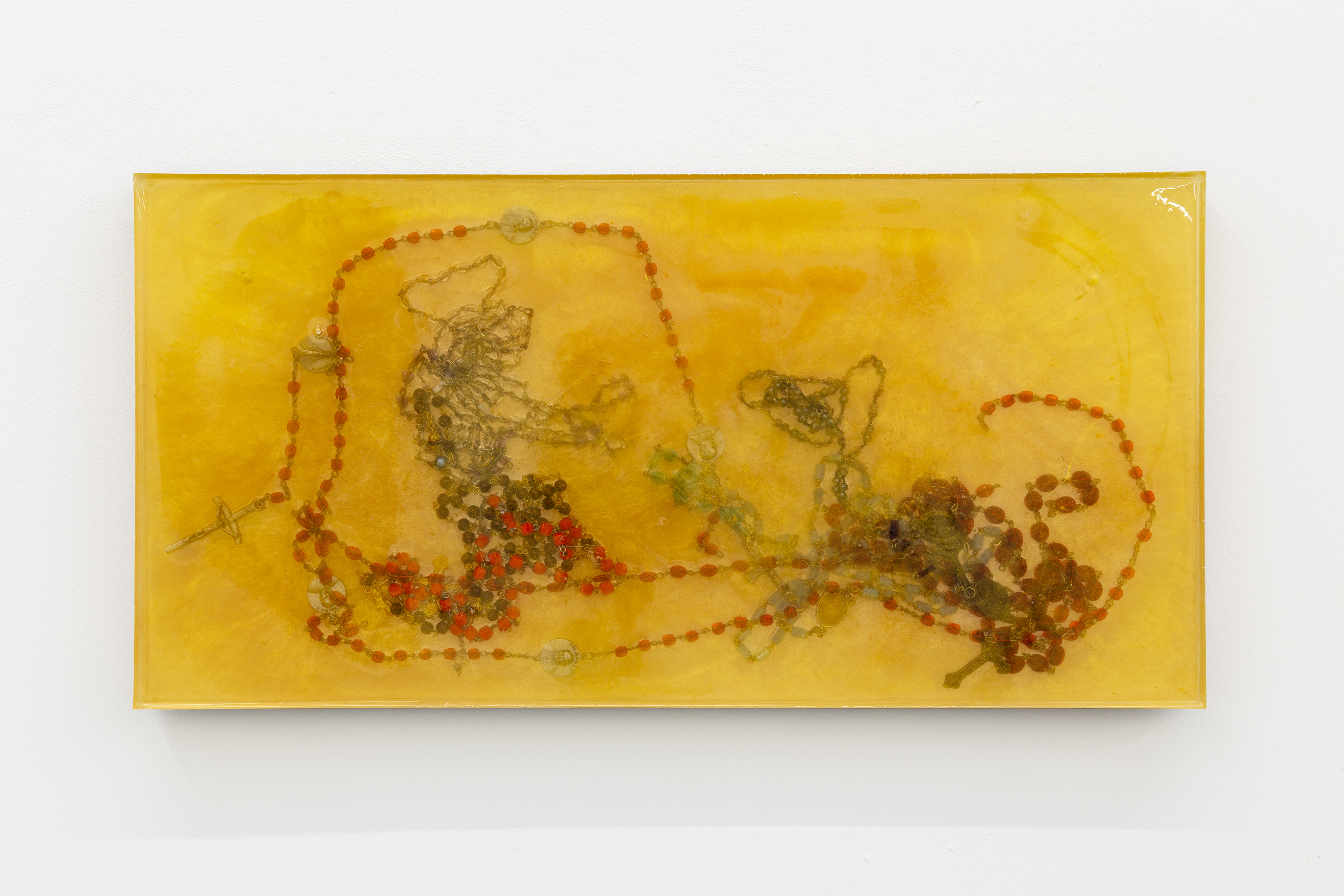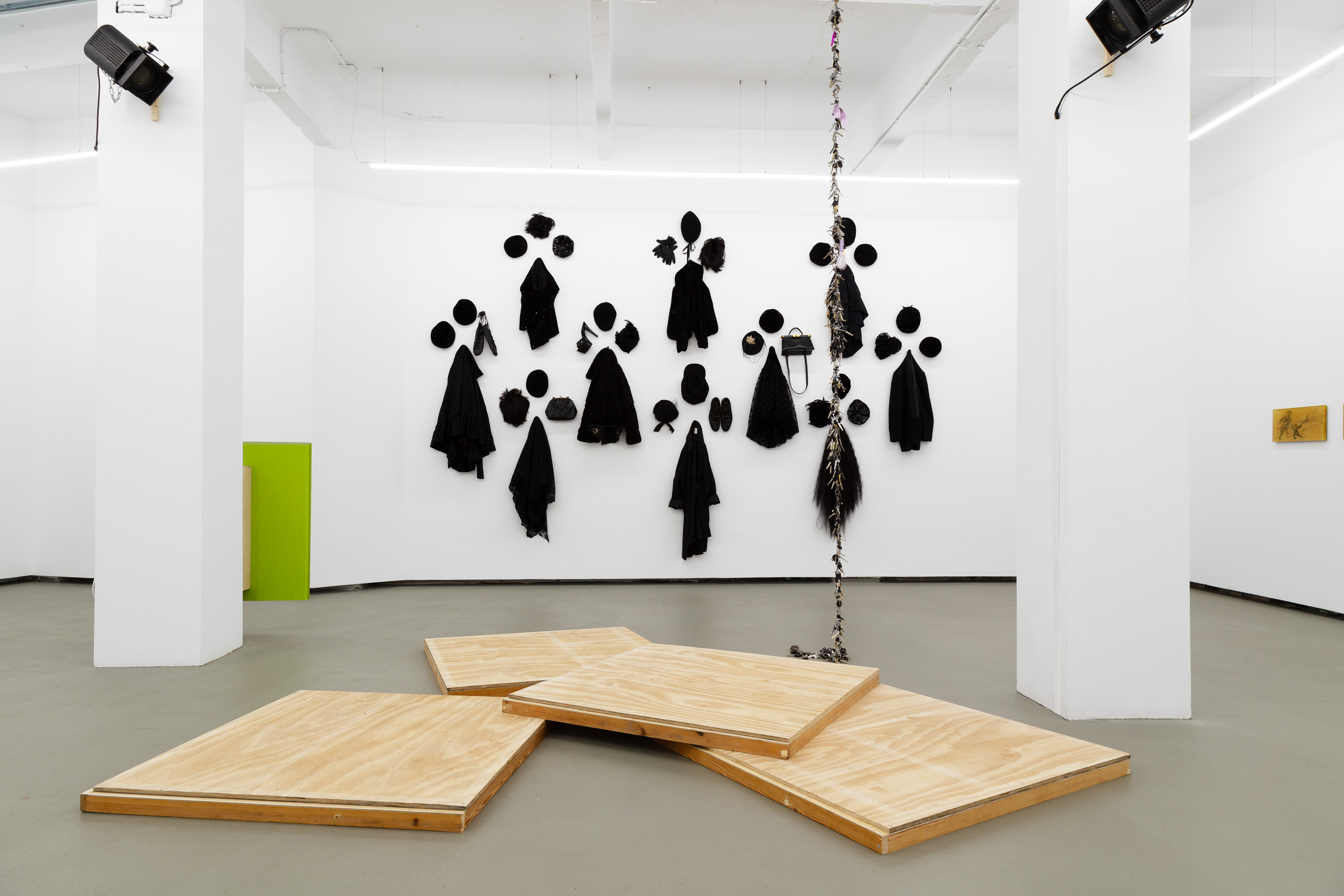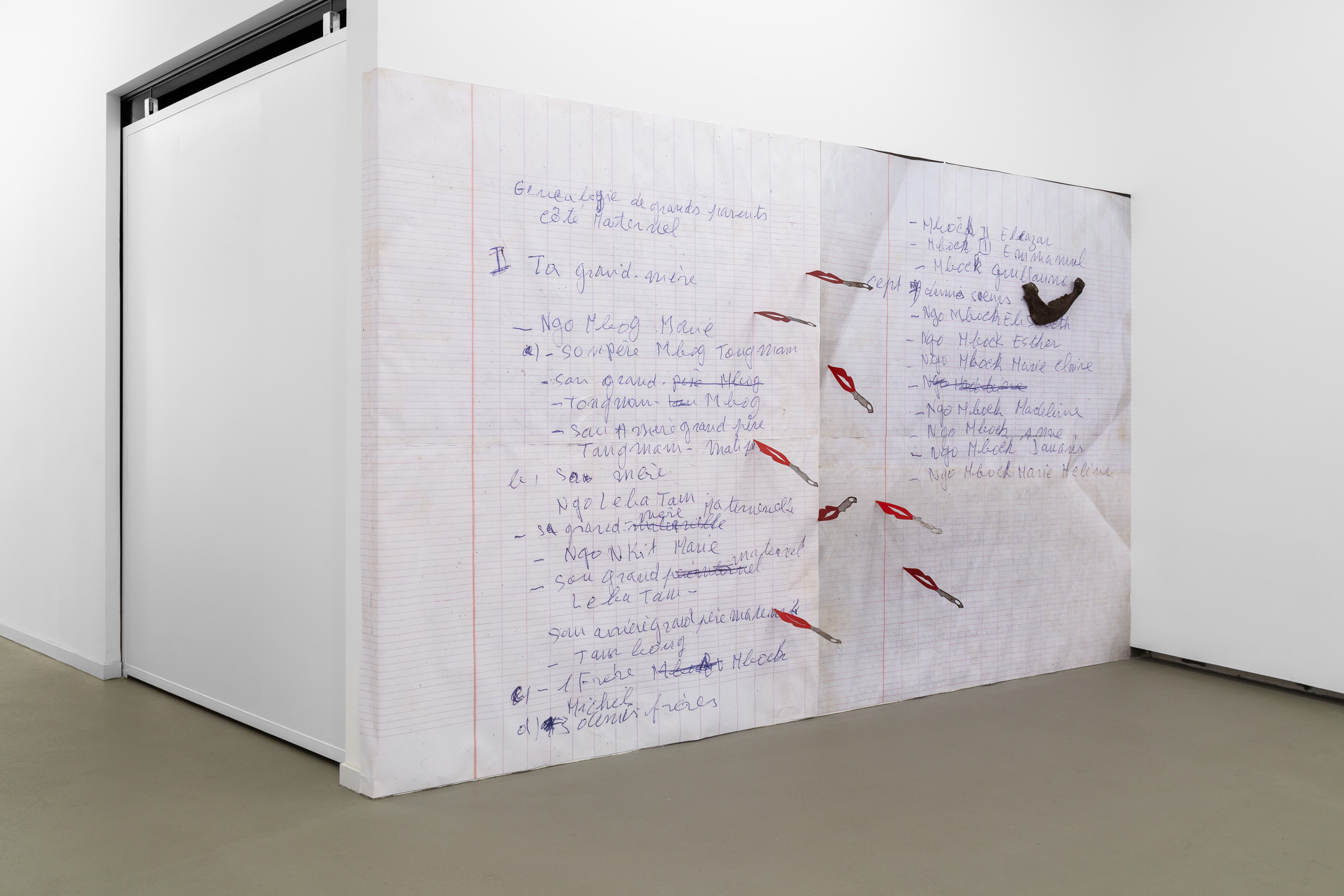
The poets leave hell and again behold the stars is a multimedia exhibition featuring works by Sitara Abuzar Ghaznawi, Marcelline Mandeng Nken, Victor Ruiz Colomer, Shola von Reinhold, Aviva Silverman, and Sgàire Wood, curated by Cory John Scozzari. There are clouds, a chain made of keys, giant handwritten diary pages, letters held in magnetic mirrors that open and close, a stage, depictions of angels, rosaries set in resin, cyanotypes made with sunlight, and an ermine pattern composed of singular objects awaiting activation. Together, the individual pieces contribute to the creation of a world with two distinct modalities: a static exhibition, and a stage set for performance. The two states can be characterized as day and night, as each has their respective illumination: the exhibition—day—is lit predominantly by natural light that floods the gallery through a series of skylights; and the stage set—night—is bathed in warm tungsten lights sourced from a theatre. The show, like many of the works it holds, has the ability to transform and move through two distinct states, read as one thing to then become another.
The exhibition’s title, The poets leave hell and again behold the stars, is a variation of a quote pulled from a particularly triumphant moment in Dante’s epic poem The Divine Comedy. At this point in the story—the final line of the first section Commedia Cantica I: Inferno—Dante says, “Now we came out, and once more saw the stars,” signaling the moment where he and his guide Virgil emerge from hell and move into earthly purgatory, marking the beginning of the poem’s second section Commedia Cantica II: Purgatorio. For me, thinking about this moment provides a filter through which to traverse the exhibition. The corridor serves as a prelude or portal helping to acclimate to the crux of the exhibition in the gallery’s main space.
One is first greeted by a reflective wall work by Victor Ruiz Colomer, the first in a series of sculptures where quotidian mirrored medicine cabinets house folded cardboard objects. They are displayed laying dormant but when they are opened they expand spatially to reveal distinct letters T, M, and H respectively. They transform and interact with the viewer’s body and create, at times, cavernous architectures to look into and navigate around.
This work is followed by a red figurative cyanotype by Aviva Silverman, the first of three in the exhibition, made using transparencies and physical prayer objects. The adjoining sculptures found in the main exhibition room are composed of used rosaries which trace the shapes of people, animals, and homes tethered to one another, suspended in a resin-like amber. Silverman is interested in the protective intentions that ritual objects carry, including the likeness of angel iconography, prayer hands, and rosaries—which are recurrent images in their work.
Sitting alongside Silverman’s piece in the entrance hallway, we find the first work on paper by Sitara Abuzar Ghaznawi. This series, Clouds (Aug–Oct 2023), are acrylic paintings depicting clouds and are part of a larger archive. These light and airy images are held fixed onto steel plates by small magnets. Their presence, especially in the main gallery, acts as a window or a skylight, delineating the space and grounding the viewer into the scene.
On the wall facing Abuzar Ghaznawi’s clouds sits an installation by Sgàire Wood. Composed of a repeating pattern of distinct units, the piece entitled Erminois No. 2 is a scaled-up version of another work, both of which used everyday beauty and fashion materials to create the Ermine pattern. This pattern, with stark white and graphic black, has since been replicated in many forms but was historically a staple for formal clothing worn by royalty and members of the high court. The original form was cruelly made with the bodies of several stoats, a small mammal whose fur turned white in the winter and whose tails had tips that were jet black. Wood’s version here is created using distinct elements of clothing and fashion accessories such as gloves, wigs, and shoes and reimagines the original.
On the far end of the gallery is a small framed work on paper by Shola von Reinhold entitled Grotto Rebises. This piece is part of an ongoing series oftentimes depicting Afroarcadian angelic figures, many of which are—as the title suggests—Rebises: hermaphroditic human-like entities that are the product of an alchemical process of purification, separation, and then ultimately unification to form one being. Here, the two figures seem to gaze at or into one another, surrounded by a silver mat and traditional wooden frame.
Additionally, there are two sculptural and image-based works by Marcelline Mandeng Nken. The larger of the two features a photographic print of the artist’s childhood diary pages, where she describes herself in relation to her ancestors through lists and repeated phrases. The materiality of the paper, its folds and creases, are visible in the image and it is pierced by a collection of handmade knives shaped like lips. Also suspended from the ceiling to the floor between the gallery’s columns is a linear cluster of keys and small objects, creating a third column. For the artist, both pieces explore the impact of domestic and familial lineage by scaling up the intimate to architectural dimensions.
In the center of the exhibition, there is a cluster of wooden platforms and two theatre spotlights that together create a stage. Not an artwork in itself, this element of exhibition architecture uses the language of theatre in order to transform many of the artworks—especially the works of Abuzar Ghaznawi, Wood, and Mandeng Nken—into stage sets. In the case of Wood’s piece Erminois No. 2, it was conceived quite literally as a backdrop for a performative activation taking place as part of the exhibition’s inauguration.
Purgatory, like our own world, is said to have both day and night, and in the poem when they leave hell, dawn is rising. If we could join Dante and Virgil in their moment of transition—both spatially rising out of the underworld and stepping onto the earthly ground, and temporally at this moment of shifting light—I think we would find ourselves still and on a plateau of possibility.
Curated by Cory John Scozzari

